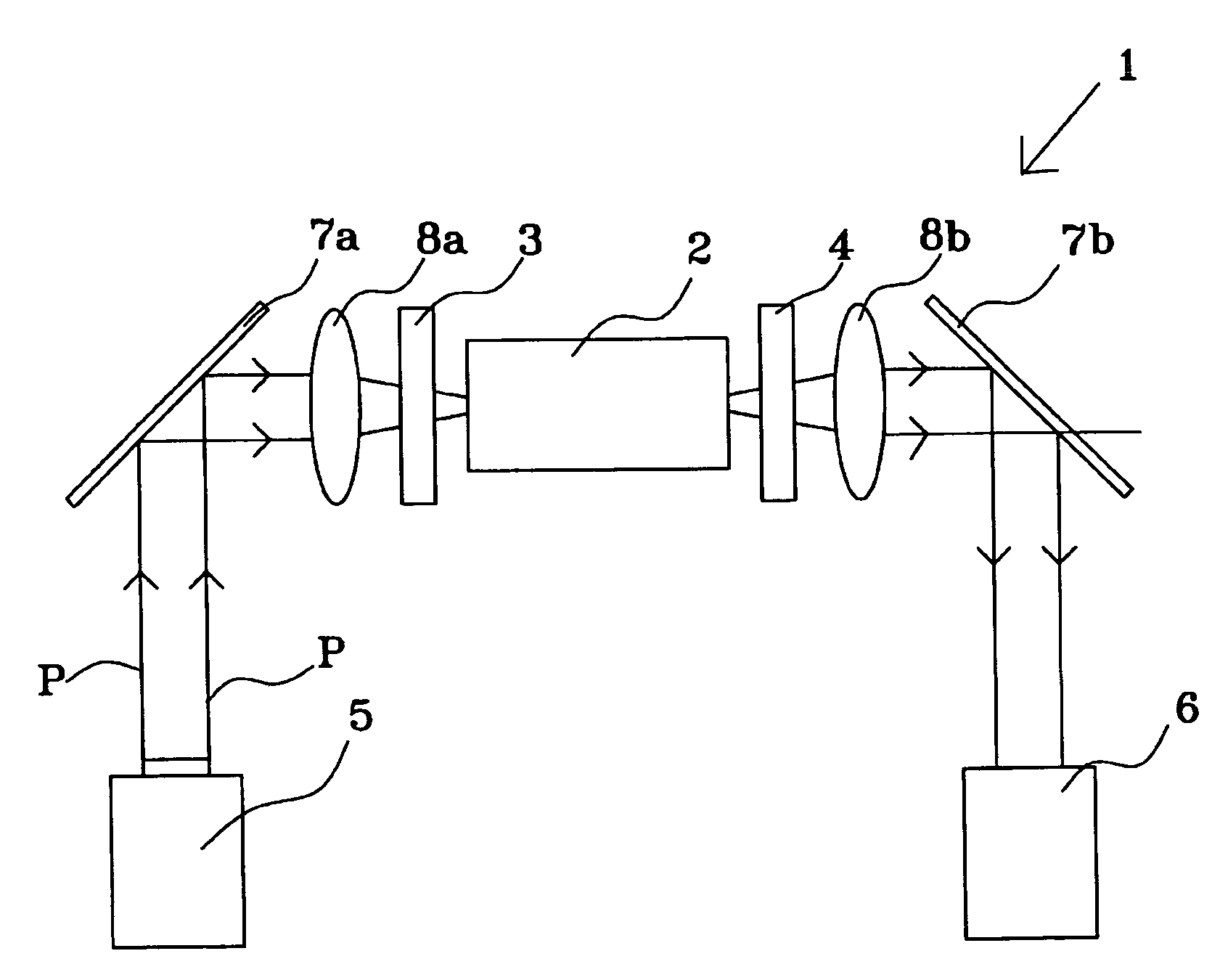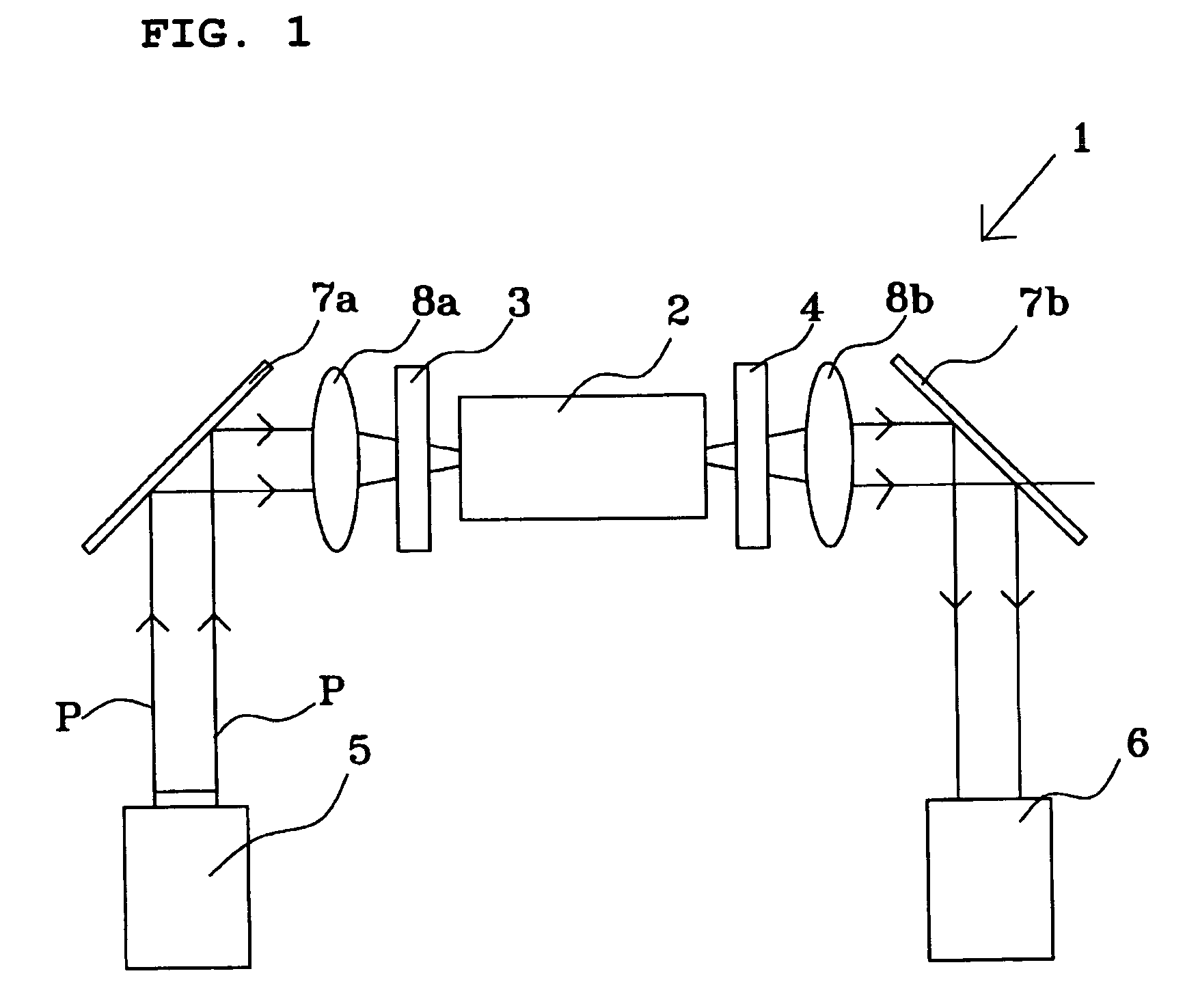Photomagnetic field sensor
a photomagnetic field and sensor technology, applied in the field can solve the problems of deteriorating sensitivity and the inability to produce single crystals of garnet phases directly from the molten composition of starting materials, and achieve the effects of improving sensitivity, reducing the number of rotators, and improving the sensitivity of photomagnetic field sensors
- Summary
- Abstract
- Description
- Claims
- Application Information
AI Technical Summary
Benefits of technology
Problems solved by technology
Method used
Image
Examples
example 1
[0035]Hereinafter, a preferred embodiment of the present invention will be more specifically described.
[0036]1. Preparation of TAG Single Crystal
[0037]First, Tb4O7 (purity; 99.9%) and Al2O3 (purity; 99.99%) are prepared as starting materials for a paramagnetic garnet polycrystal, and are weighed out to form Tb3Al5O12. The mixing amounts and the composition may be changed, depending on a required Verdet constant. Then, refined water is added to the mixed powder of the prepared starting materials and mixed together with balls for about 24 hours. After water is removed from the mixed powder, the powder is dried by a drier. The dried power is sieved through a mesh sieve for adjustment of the grain size of the mixed powder and calcinated at about 1200° C. for approximately 2 hours in an electric furnace. After the calcinated mixed powder is crushed, an organic binder and a solvent are added to the mixed powder and mixed together with balls for several hours. Thus, a slurry-like mixture i...
example 2
[0041]A photo magnetic field sensor having the same constitution as that of Example 1 except that a TAG type single crystal having formula of (Tb2.8Ce0.2) Al5O12 is used for the Faraday rotator is produced, and is taken as Example 2 (it should be noted that a TAG type single crystal having a portion of the Tb substituted by Ce is suitable for use in a visible light region of about 525 nm to about 680 nm).
example 3
[0042]A photo magnetic field sensor having the same constitution as that of Example 1 except that a TAG type single crystal having formula of (Tb2.8Pr0.2)Al5O12 is used for the Faraday rotator is produced, and is taken as Example 3.
PUM
 Login to View More
Login to View More Abstract
Description
Claims
Application Information
 Login to View More
Login to View More - R&D
- Intellectual Property
- Life Sciences
- Materials
- Tech Scout
- Unparalleled Data Quality
- Higher Quality Content
- 60% Fewer Hallucinations
Browse by: Latest US Patents, China's latest patents, Technical Efficacy Thesaurus, Application Domain, Technology Topic, Popular Technical Reports.
© 2025 PatSnap. All rights reserved.Legal|Privacy policy|Modern Slavery Act Transparency Statement|Sitemap|About US| Contact US: help@patsnap.com



